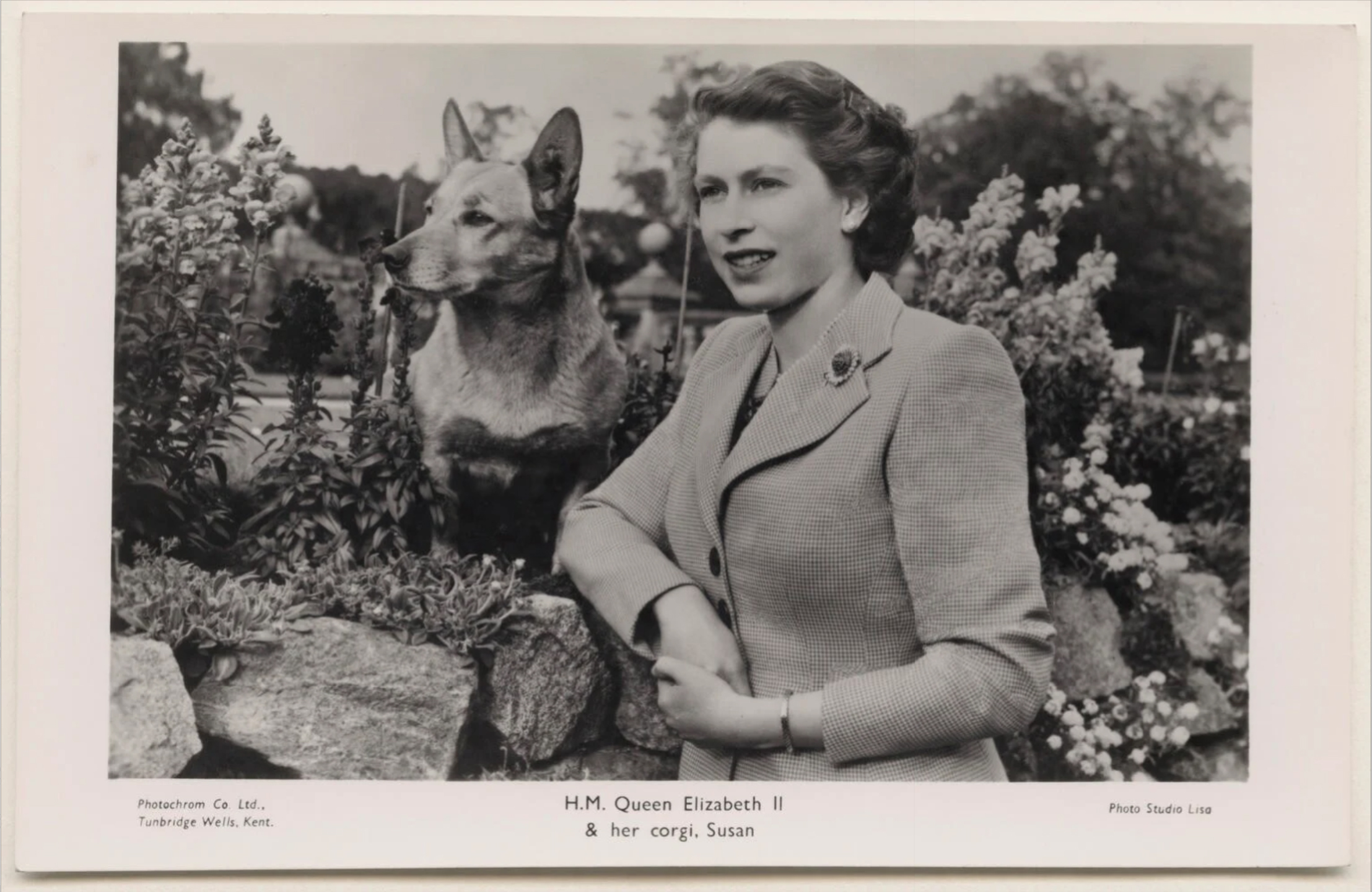Pet Trusts: Make Sure They Receive the Royal Treatment

Queen Elizabeth II was famously known for her love of Welsh Pembroke Corgis. Pictured above is Elizabeth with her first corgi, Susan, who was given to Elizabeth on her 18th birthday. Over her lifetime, Elizabeth had 30 corgis, all descended from Susan. However, after the Queen Mother’s death in 2002, Elizabeth stopped breeding the breeding program, as she did not want to leave any young dogs behind. The last of her precious corgis passed 2018, well before Elizabeth’s recent passing. If, however, some of the corgis had still been around, then a pet trust could have ensured that they were taken care of exactly how the Queen wanted.
What Is a Pet Trust?
Unlike Susan and her descendants, your pets might not be actual royalty. However, that doesn’t mean you don’t see them that way. For most people, simply giving their pets to a trusted friend or family member, along with a cash gift to cover the pet’s care, suitably achieves their purpose. However, if your pets feel almost like your children, or if you think they deserve truly royal treatment and you want to be absolutely sure they receive the best possible care when you are gone, a Pet Trust might be the way to go.
A trust contains assets which can only be used according to the terms provided in the trust. By creating a pet trust, you can make provisions for the quality (or brand) of dog food which must be purchased, which kennel must be used, how often they must be groomed, how much exercise they should receive – really, anything you can come up with. The purpose of the trust isn’t to be difficult – it’s to make sure that your loved ones are taken care of, exactly the same reason for creating your Estate Plan.
Are There Laws Around Pet Trusts?
Pennsylvania actually has a law regarding Pet Trusts – 20 Pa.C.S. § 7738. The statute has three points.
First, the trust can only be created to care for animals alive during the lifetime of the settlor. This means you can’t set the terms of the trust to continue taking care of your pet’s offspring. (Pets in gestation at the time of your death, however, do count.) Once your pet dies – or if the trust is for the benefit of multiple pets, once all of them die – the trust terminates.
Second, the terms of the trust can be enforced by someone appointed in the trust, or by someone appointed by the court. The statute also gives standing to anyone “having an interest in the welfare of the animal” to request the court appoint someone to enforce the trust, or to remove the person currently enforcing the trust.
Third, the value of the property of the trust should be appropriate to the trusts purposes, or the court can disburse the excess. This is a reference to a New York Case, where Leona Helmsey left her dog Trouble $12 million in trust for his care. Family members contested the trust and claimed it the amount was excessive, and the court agreed. The court reduced the trust corpus to $2 million following the advice of the caretaker, and the rest of the assets were given to family members – including some who were originally disinherited.
When Should You Create a Pet Trust?
You can create a pet trust during your life, and there may be tax benefits to doing so. But more often, the terms of a Pet Trust are created in your will (a ‘testamentary’ trust), and it only comes into existence if there are pets that need to be taken care of when you pass. At that time, the assets you designated in your will go into the newly established trust and are handled according to the terms you set. Because pet trusts are usually testamentary, once it’s time to create or update your Will, it’s time set the terms of the trust.
While you should never delay on creating your estate plan, it is particularly important not to put off setting the terms of your will and the pet trust. While intestacy is a pain, the money may still get to the same people we would have designated in our wills. However, if your intention is for the money to be set aside for the care of your pets, that simply won’t happen if you don’t have the documents in place ahead of time.
Who Is Involved in a Pet Trust?
The Trust has 3 primary parties: the caretaker, who looks after the pets; the trustee, who handles the money; and the pets themselves. The caretaker and the trustee can be the same person. This is less secure, as the person actually taking care of the dogs is also the person who is disbursing the money. However, some clients are happy with that arrangement – they trust the caretaker, they just want to make sure their wishes are understood and followed.
Other times, a client might wish to pick two different people for the role of caretaker and trustee. This setup is slightly more burdensome for the caretaker, as they must request funds from a third party. However, it also means that the assets are more secure, as the trustee can stop disbursing funds if they believe the money is not actually being used for the care of the dogs. There are professionals fiduciaries who can serve as trustee for a fee, ensuring the money is well taken care of and only used for legitimate expenses.
If you are concerned about how much work you are asking someone to do, you can always provide an income for your caretaker. The trustee would pay that income at regular intervals to compensate the caretaker for their services.
Separating the roles also allows you to grant the trustee the power to appoint a new caretaker if they believe it is necessary. Then, if the caretaker wasn’t fulfilling his or her duty, a new home could be found for the pets where they would be taken care of properly. You can also appoint a Trust Protector, and give them to power to appoint a new caretaker if they believe it is necessary. A trust protector is a third party, neither the caretaker nor the trustee, who only has very specific powers.
What Happens When the Pets Pass?
Once there are no more pets to take care of, the money is disbursed to whoever the remainder beneficiary is – something you set up in the terms of the Trust. This could be to friends and family, a charity such as an animal rescue, or even as payment to the caretaker for their efforts. (However, you want to be careful not to create any perverse incentives – you don’t necessarily want the caretaker to receive more money if the animal passes sooner.)
What About the Inheritance Tax?
According to the Pennsylvania Department of Revenue, any assets left to a pet trust are charged with a 15% inheritance tax – the highest rate. However, if you do not have a spouse, or any descendants or parents to inherit your assets (who are taxed at either 0% or 4.5%), the 15% tax rate isn’t a huge jump. The Pennsylvania Inheritance Tax rate is already 12% for anything left to siblings; anything left to friends or distant relatives would be taxed at 15%, just the same as the pet trust.
If you choose to fund the trust during your lifetime, the assets in the trust won’t be included in the inheritance tax, so long as you live at least 1 year afterwards. This is because gifts that took place more than 12 months prior to death are not subject to inheritance tax. However, that needs to be balanced with the maintenance which is required for irrevocable trusts, as well as the higher tax rate for trust income.
Making It Easy to Care for Your Pets
If your ready to set up a pet trust, or just have some questions, contact me today to set up a free consultation. I make estate planning as simple as possible, so you can move on with your life, comfortable that everything is in place to take care of your loved ones – including your beloved pets.



